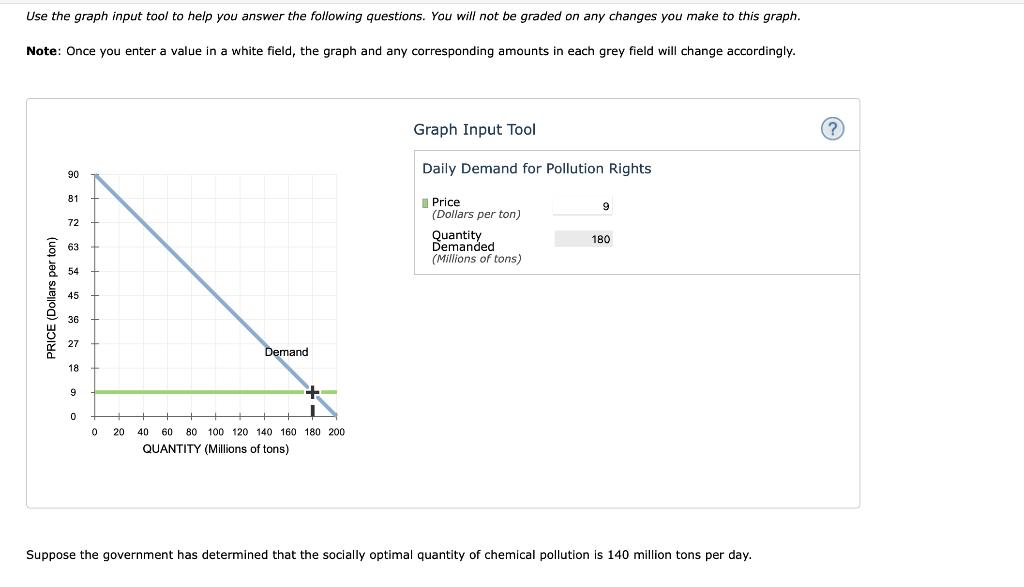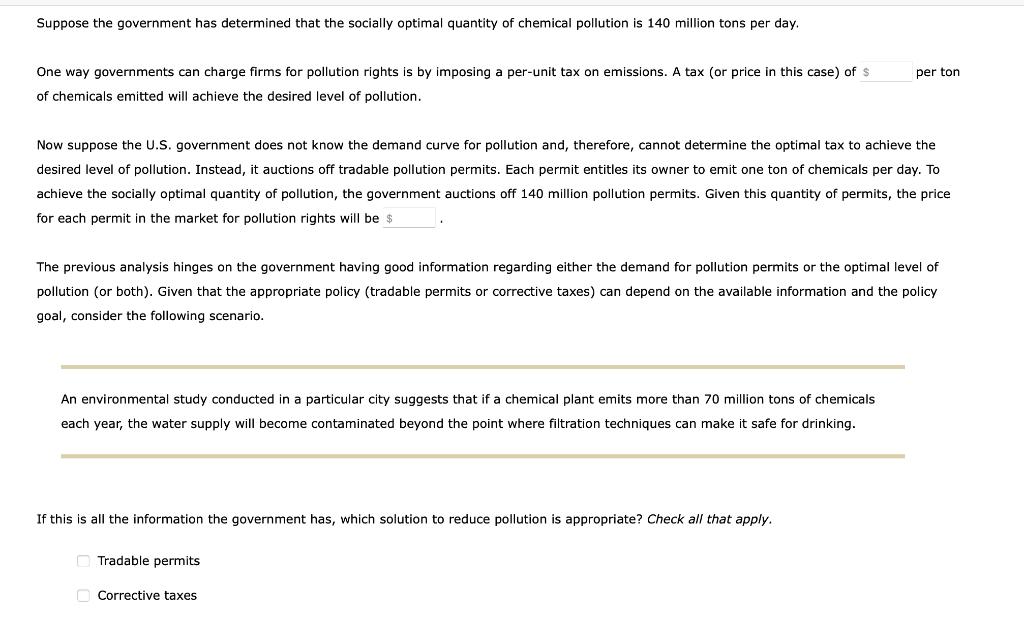Answered step by step
Verified Expert Solution
Question
1 Approved Answer
Use the graph input tool to help you answer the following questions. You will not be graded on any changes you make to this


Use the graph input tool to help you answer the following questions. You will not be graded on any changes you make to this graph. Note: Once you enter a value in a white field, the graph and any corresponding amounts in each grey field will change accordingly. PRICE (Dollars per ton) 90 81 72 54 27 18 9 0 Demand 0 20 40 60 80 100 120 140 160 180 200 QUANTITY (Millions of tons) Graph Input Tool Daily Demand for Pollution Rights Price (Dollars per ton) Quantity Demanded (Millions of tons) 9 180 Suppose the government has determined that the socially optimal quantity of chemical pollution is 140 million tons per day. Suppose the government has determined that the socially optimal quantity of chemical pollution is 140 million tons per day. One way governments can charge firms for pollution rights is by imposing a per-unit tax on emissions. A tax (or price in this case) of $ of chemicals emitted will achieve the desired level of pollution. Now suppose the U.S. government does not know the demand curve for pollution and, therefore, cannot determine the optimal tax to achieve the desired level of pollution. Instead, it auctions off tradable pollution permits. Each permit entitles its owner to emit one ton of chemicals per day. To achieve the socially optimal quantity of pollution, the government auctions off 140 million pollution permits. Given this quantity of permits, the price. for each permit in the market for pollution rights will be $ The previous analysis hinges on the government having good information regarding either the demand for pollution permits or the optimal level of pollution (or both). Given that the appropriate policy (tradable permits or corrective taxes) can depend on the available information and the policy goal, consider the following scenario. An environmental study conducted in a particular city suggests that if a chemical plant emits more than 70 million tons of chemicals each year, the water supply will become contaminated beyond the point where filtration techniques can make it safe for drinking. If this is all the information the government has, which solution to reduce pollution is appropriate? Check all that apply. per ton Tradable permits Corrective taxes
Step by Step Solution
★★★★★
3.57 Rating (164 Votes )
There are 3 Steps involved in it
Step: 1
Question Blank1 27 because one way government can char...
Get Instant Access to Expert-Tailored Solutions
See step-by-step solutions with expert insights and AI powered tools for academic success
Step: 2

Step: 3

Ace Your Homework with AI
Get the answers you need in no time with our AI-driven, step-by-step assistance
Get Started


